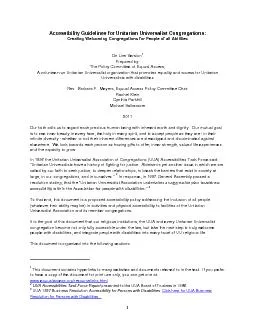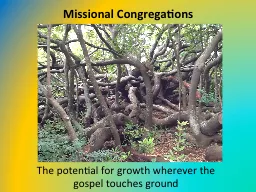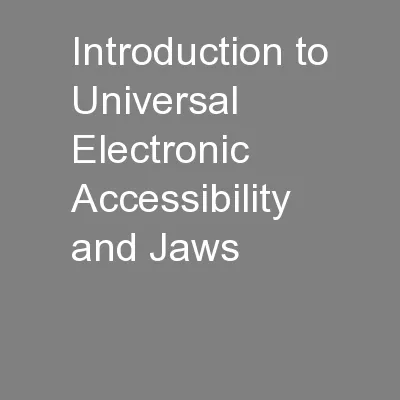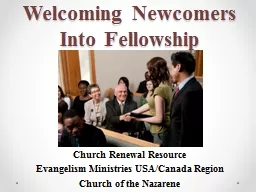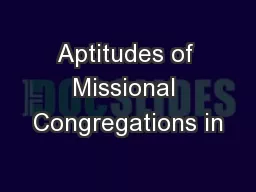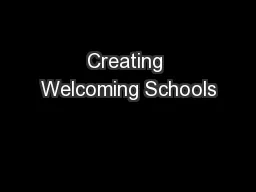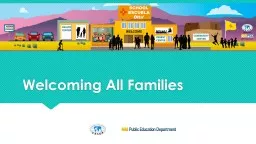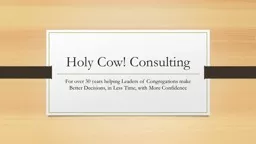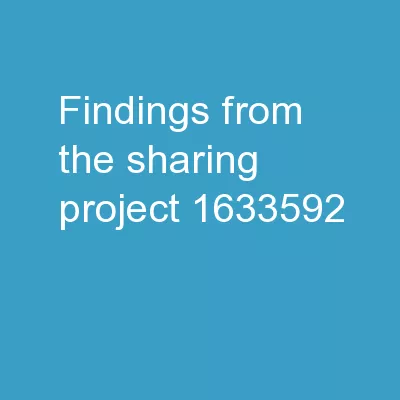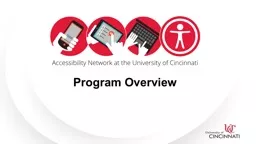PDF-Accessibility Guidelines for UnitCreating Welcoming Congregations for
Author : briana-ranney | Published Date : 2015-11-26
This document contains hyperlinks to many websites and documents referred to in the text If you prefer to have a copy of the document for print use only you can
Presentation Embed Code
Download Presentation
Download Presentation The PPT/PDF document "Accessibility Guidelines for UnitCreatin..." is the property of its rightful owner. Permission is granted to download and print the materials on this website for personal, non-commercial use only, and to display it on your personal computer provided you do not modify the materials and that you retain all copyright notices contained in the materials. By downloading content from our website, you accept the terms of this agreement.
Accessibility Guidelines for UnitCreating Welcoming Congregations for: Transcript
Download Rules Of Document
"Accessibility Guidelines for UnitCreating Welcoming Congregations for"The content belongs to its owner. You may download and print it for personal use, without modification, and keep all copyright notices. By downloading, you agree to these terms.
Related Documents

